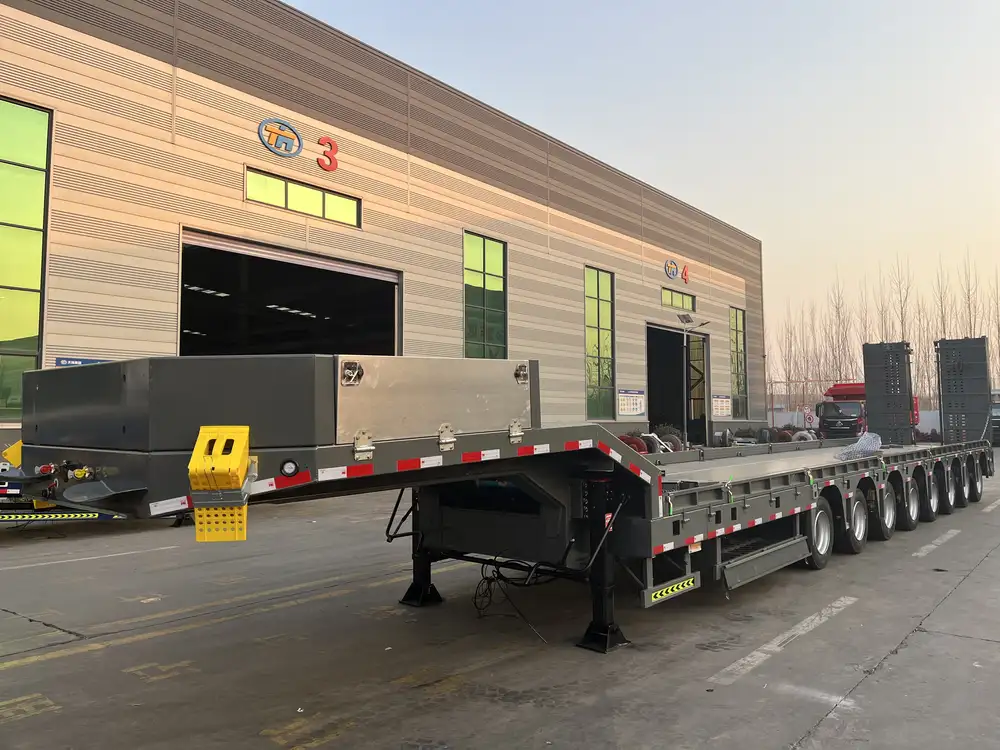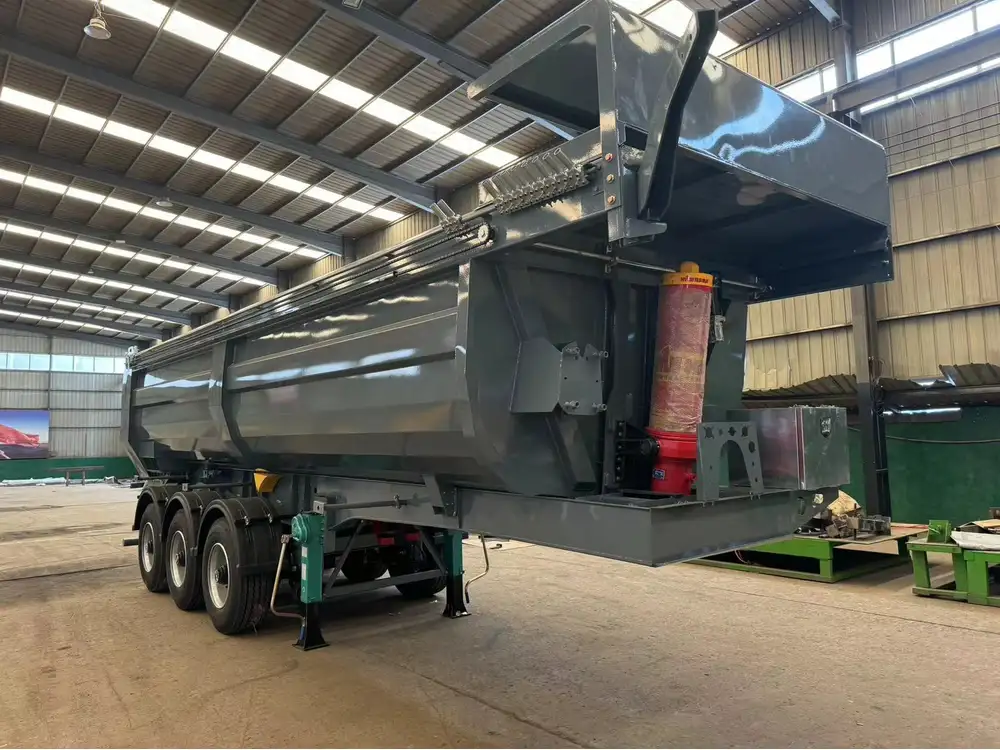Transporting propane tanks can be daunting due to the inherent risks associated with the flammable gas. Ensuring that a propane tank is securely fastened to your trailer is paramount for compliance, safety, and peace of mind. This detailed guide provides actionable insights and best practices on how to secure a propane tank to a trailer efficiently.
Understanding the Importance of Securing Propane Tanks
Before diving into the techniques and equipment needed for securing propane tanks, it is essential to understand why proper fastening is critical.
- Safety Concerns: Loose propane tanks can shift during transport, leading to potential leaks or catastrophic incidents.
- Legal Compliance: Many regions have regulations regarding the transport of hazardous materials, including propane.
- Damage Prevention: Securing the tank prevents damage to both the tank and the trailer, which can lead to costly repairs.
Key Regulations and Guidelines
Different local and federal regulations govern the transportation of propane tanks. Familiarize yourself with the following standards:
| Regulation | Description |
|---|---|
| DOT (Department of Transportation) | Requires that propane tanks be secured and properly labeled during transport. |
| NFPA (National Fire Protection Association) | Provides guidelines on the safe handling of propane and flammable gases. |
| OSHA (Occupational Safety and Health Administration) | Enforces workplace safety, including proper practices for hazardous materials transport. |

Choosing the Right Equipment
Safety starts with the right tools. Below we outline various materials and equipment vital for securing a propane tank.
Types of Straps and Tie-Downs
Choosing the appropriate straps is crucial; consider the following options:
Ratchet Straps
- Advantages: Adjustable tension, provides a tight and secure hold, durable.
- Disadvantages: Requires more time to fasten and unfasten.
Cam Buckle Straps
- Advantages: Easy to use, suitable for lighter tanks.
- Disadvantages: May not provide as much tension as ratchet straps.
Bungee Cords
- Advantages: Flexible and easy to use.
- Disadvantages: Provides less security and is not recommended for heavy tanks.
Anchoring Systems
In addition to straps, you’ll need a reliable anchoring system. Here are popular options:
- D-Rings: Bolted to the trailer bed for a secure point of attachment.
- Chocks: Placed around the tank to prevent lateral movement.
- Heavy-Duty Cargo Nets: For covering and securing multiple tanks.

Preparing Your Trailer
Before attempting to secure the propane tank, inspect your trailer to ensure it is suitable for this endeavor.
Check for Stability
- Floor Condition: Check the trailer bed for signs of damage or rot. A sturdy surface is required to anchor the tank securely.
- Weight Distribution: Position the propane tank to maintain optimal weight balance on the trailer.
Secure the Tank Area
- Cleanliness: Remove any debris that could compromise the tank’s security or cause hazards.
- Non-Slip Surfaces: Consider using mats or non-slip coatings to prevent slipping during transport.

Step-by-Step Guide to Securing the Propane Tank
Below is a detailed, systematic approach to securely fastening a propane tank to your trailer.
Step 1: Positioning the Tank
- Place the propane tank upright on a flat area of the trailer. Ensure it is away from potential impact zones and marked hazards.
- Depending on local regulations, ensure that the tank’s relief valve is facing upwards for safety.
Step 2: Using Chocks and Blocks
- Chocks: Use wooden or rubber chocks on either side of the tank to prevent lateral movement.
- Blocking: If necessary, use blocks beneath the tank to elevate and stabilize it further.

Step 3: Strap the Tank
- Attach the Strap: Begin by fastening one end of the ratchet or cam buckle strap to the D-ring or anchoring point on the trailer.
- Wrap Around the Tank: Loop the strap around the propane tank, positioning it at the midpoint.
- Secure the Other End: Bring the strap back to the original D-ring and secure it tightly, ensuring no slack is left.
Step 4: Double-Check Tension and Security
- After securing, pull on the strap to confirm it is tight and the tank is immovable.
- Inspect the attachment points and chocks to ensure everything is secure.
Step 5: Final Safety Checks
- Conduct a visual inspection of the propane tank for signs of leaks, particularly around the valve.
- Look for signs of wear on straps, ensuring they can withstand the tension during transport.

Quick Safety Checklist
| Task | Status |
|---|---|
| Tank properly oriented | ✅ |
| Chocks and blocks in place | ✅ |
| Straps fastened securely | ✅ |
| Visual inspection for leaks | ✅ |
Transporting Your Trailer with Propane Tanks
When transporting with the propane tank securely fastened, keep the following best practices in mind:
Driving Considerations
- Speed Control: Maintain a safe speed, minimizing sudden stops or sharp turns that could jeopardize the tank’s security.
- Route Selection: Choose well-maintained roads and avoid off-road paths that may jostle the trailer.

Emergency Protocols
- Keep a fire extinguisher accessible during transport.
- Have an emergency plan in place in case of leaks or accidents.
Handling Unforeseen Situations
Despite thorough preparation, unforeseen events can occur while transporting propane tanks. Here’s how to handle emergencies effectively.
In Case of an Accident
- Evacuate Immediately: Move away from the area and ensure others do the same.
- Contact Emergency Services: Call for help and inform them of the hazardous materials involved.
- Isolate the Area: Keep a safe distance from the accident site to prevent injuries from potential explosions.

Suspected Leaks
- If you smell gas, regardless of other conditions, ventilate the area and avoid using anything that could ignite a spark.
- Move away from the tank and allow trained professionals to handle the suspected leak.
Maintenance and Storage of Propane Tanks
Proper maintenance is key to ensuring longevity and safety for propane tanks. Here are several tips to consider:
Regular Inspections
- Monthly Checkups: Inspect the tank and its fittings for any wear or potential damage.
- Annual Professional Inspections: Have a qualified technician check the tank, especially before long-term storage.

Proper Storage
When storing propane tanks, consider these guidelines:
- Standing Upright: Always store tanks in an upright position, ensuring the valve is closed.
- Location: Store tanks outdoors in a cool, dry place away from flammable materials.
- Ventilation: Ensure the storage area is well-ventilated.
Conclusion
Securing a propane tank to a trailer is not only a matter of compliance but also an essential component of transport safety. By following this detailed guide, you can ensure that you are implementing best practices for propane tank security. From selecting the right equipment to regular maintenance checks, every step plays a critical role in ensuring safety throughout the transportation process.
Embark on your next journey with confidence, knowing your propane tanks are secured and compliant with safety measures for a risk-free experience.



